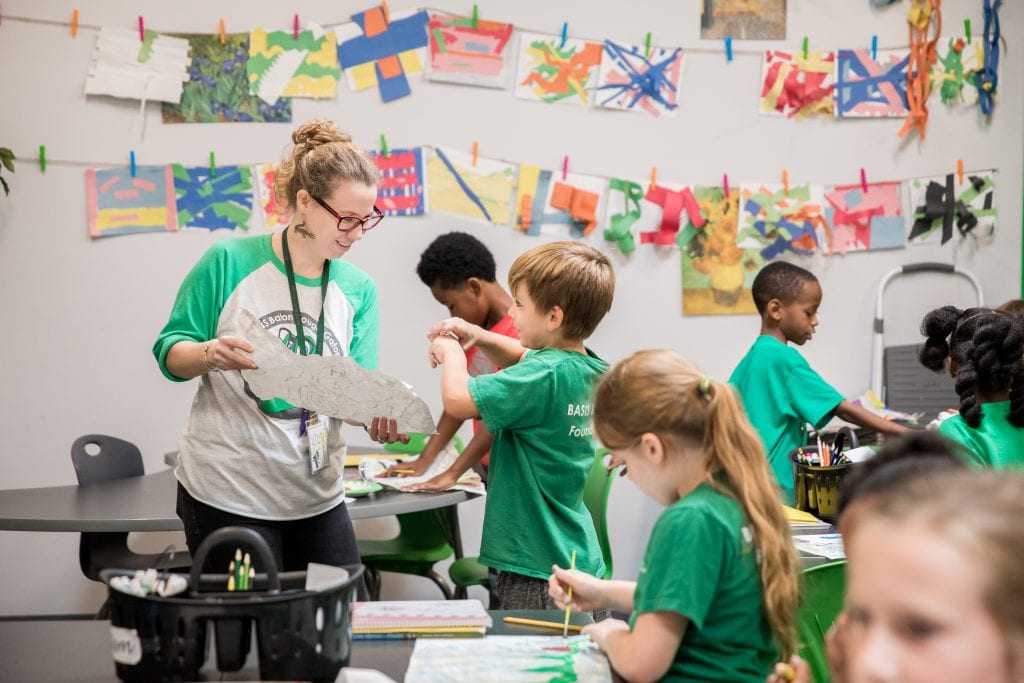Disclosure: This post is sponsored by Basis Charter Schools.
7 Steps to Establishing a Growth Mindset
We come into this world with very little knowledge about the world we live in, but we are born with an innate desire and unlimited capacity for learning. We form ideas, discover interests, and develop skills in response to our environment. Every day we process new data.
As we grow and build relationships, peers and mentors encourage, even compel, us to move forward, to progress, to increase our potential. Every day is filled with opportunity to learn, and there truly is no limit.
Once children start school, they become increasingly aware of their own performance—and how they measure up.
Naturally, they begin judging their own abilities as they compare themselves to other students. And while some are motivated to learn, grow, compete, and achieve, others shut down.
Stanford Psychology professor Carol Dweck, in her book Mindset: The New Psychology of Success, describes how people without a growth mindset view failure as a reflection of ability, and ability as static, with limited potential for improvement; failure validates their inadequacies. Those with a growth mindset thrive on challenge, and consider failure a “springboard for growth and for stretching our existing abilities.” Dweck explains how a growth mindset enables us to build on knowledge, develop skills, and hone talent.

Ashley Landry Photography
BASIS Baton Rouge 2019-20
BASIS Baton Rouge 2019
How can we help our children establish a growth mindset, one that recognizes that the unknown lying ahead presents opportunities rather than obstacles? How can we teach them to seek challenges and work hard? How can we show them they can accomplish great things that they have not even attempted yet?
- Expect great things. Expectations tell us what we should be able to accomplish. While it’s important to be realistic in setting goals, research shows us time and again how greater expectations lead to greater accomplishments. When we believe our kids can do more, they rise to the challenge.
- Paint the big picture. Help kids understand why they should want to reach goals. Help them to see what can be accomplished a few steps ahead. Highlight the greater purpose of the task at hand.
- Set the next goal. The best time to set a new goal is when we’ve met the last one. Praise their accomplishments, and encourage them to see how it moves them forward to the next step.
- Praise effort—but celebrate growth. Hard work is key to achievement, but it is not the goal itself. Encouraging kids to put forth their greatest effort means recognizing hard work when they don’t meet a goal. But remember to help them readjust their eyes toward the prize. Then celebrate their hard-earned successes.
- Fail with pride. Help children see that failure provides new opportunity to improve. Taking chances means failing regularly, but it’s the only path to success.
- Train the brain. Like the muscles in our body, the brain must work out regularly. Growth, strength, and flexibility of the mind also require daily exercise. Encourage frequent brain workouts. Let the brain break a sweat.
- Stay in the zone. We’re all comfortable doing the things we do well. But, in order to grow, sometimes we need to bite off a little more than we can chew. An enriching environment drives kids to reach beyond their comfort zone, by setting goals that would be just outside their reach, without some direction. This “zone of proximal development” includes skills and abilities that can be tapped with just the right amount of guidance, and it is the key to progress.



















